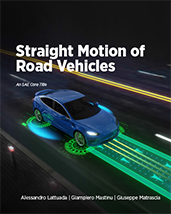Journal Article
Friction Estimation at Tire-Ground Contact
2015-04-14
2015-01-1594
The friction estimation at the tire-ground contact is crucial for the active safety of vehicles. Friction estimation is a key problem of vehicle dynamics and the ultimate solution is still unknown. However the proposed approach, based on a simple idea and on a simple hardware, provides an actual solution. The idea is to compare the tire characteristic at a given friction (nominal characteristic) with the actual characteristic that the tire has while running. The comparison among these two characteristics (the nominal one and the actual one) gives the desired friction coefficient. The friction coefficient is expressed in vector form and a number of running parameters are identified. The mentioned comparison is an efficient but complex algorithm based on a mathematical formulation of the tire characteristic. The actual tire characteristic is somehow measured in real time by a relatively simple smart wheel which is able to detect the three forces and the three moments acting at the hub.

